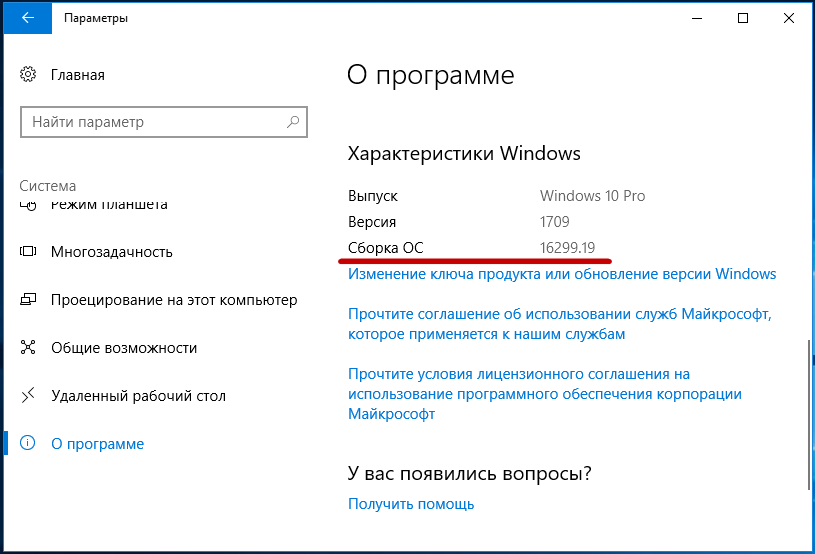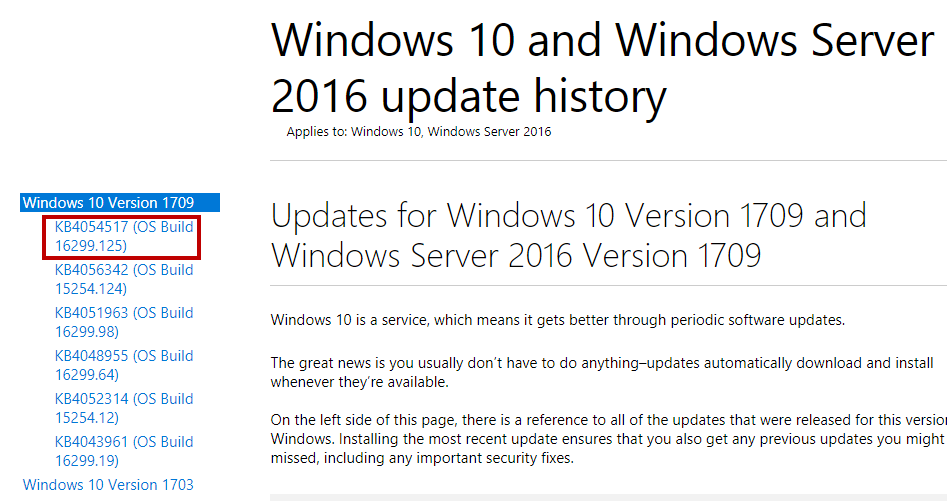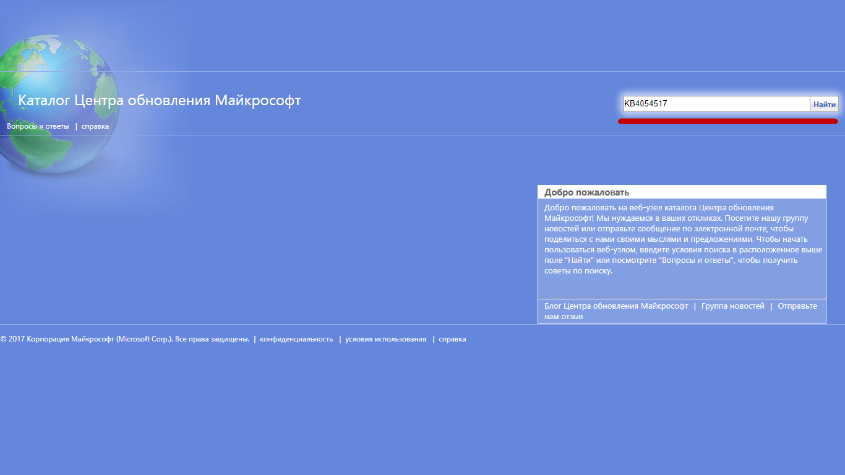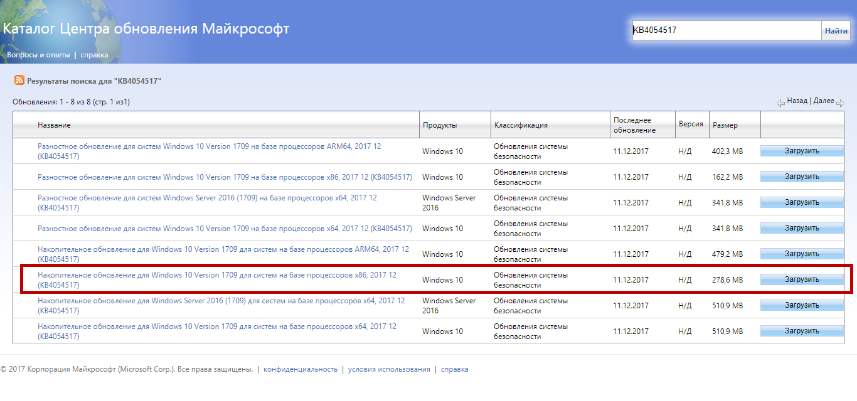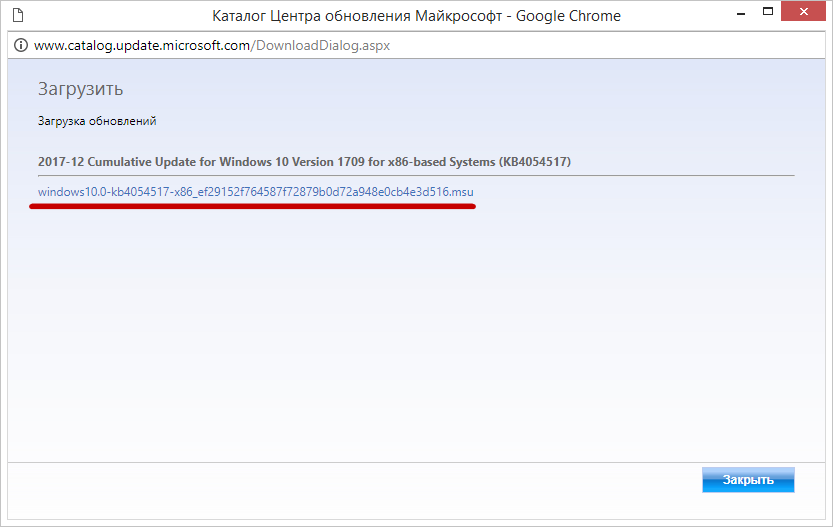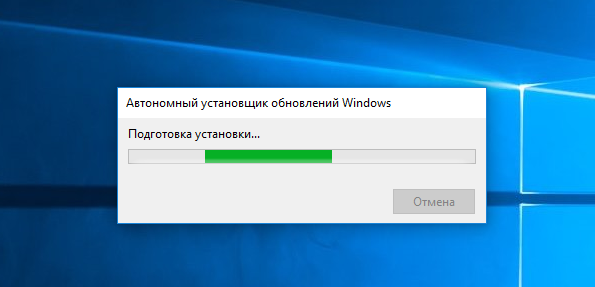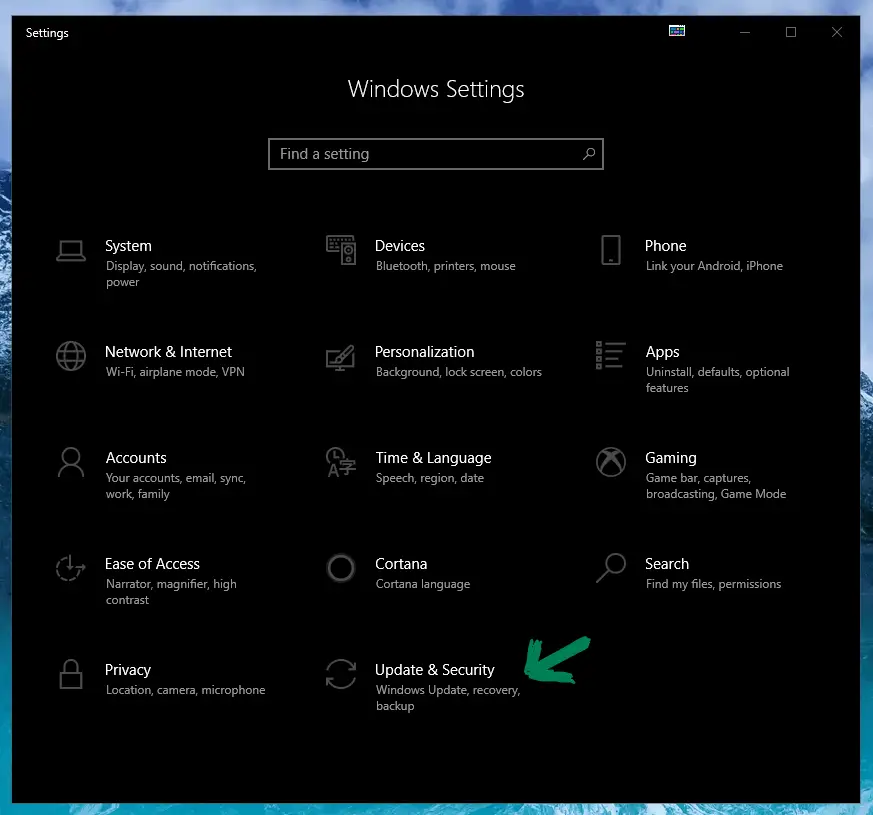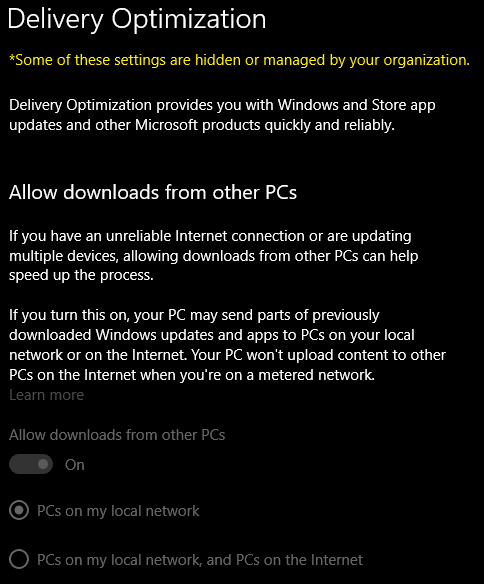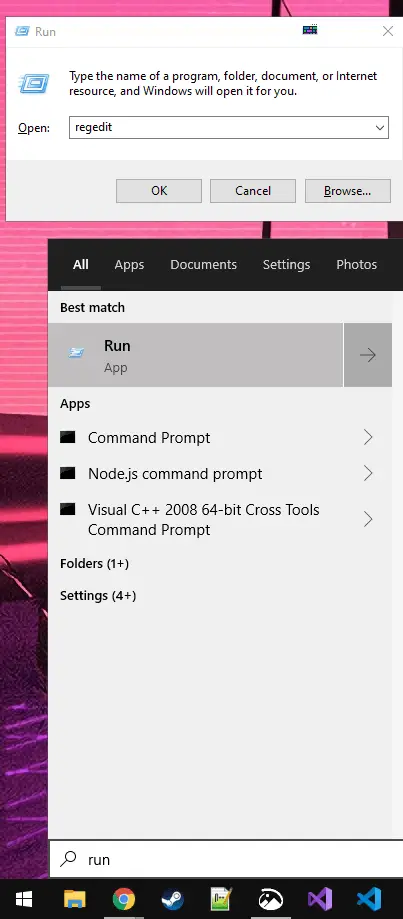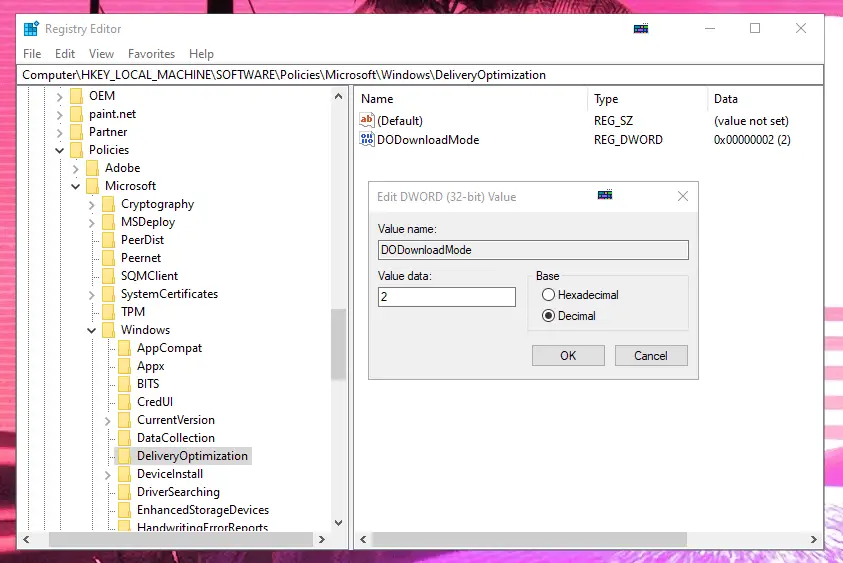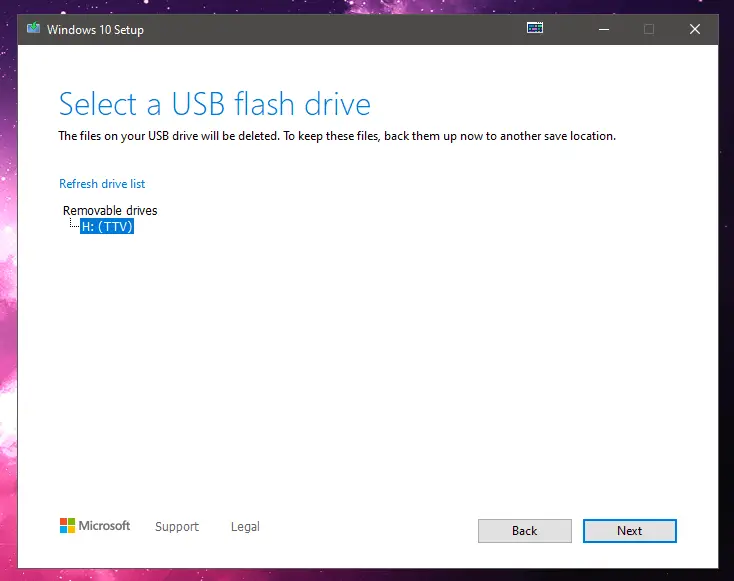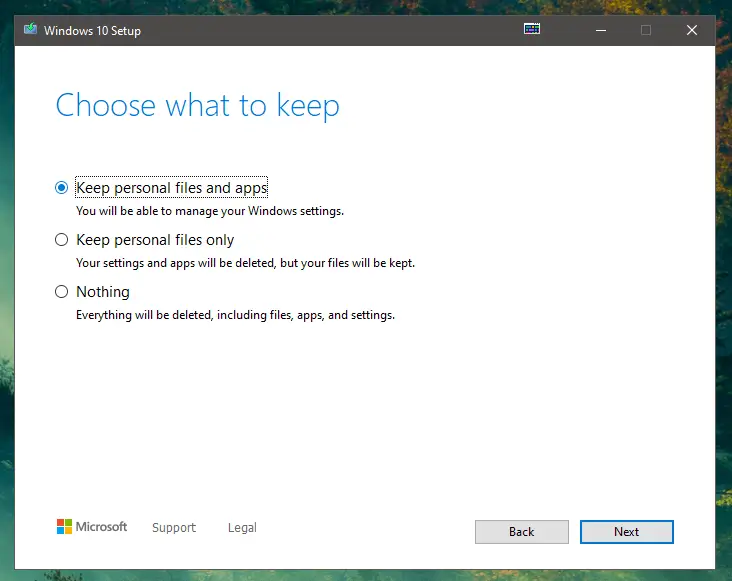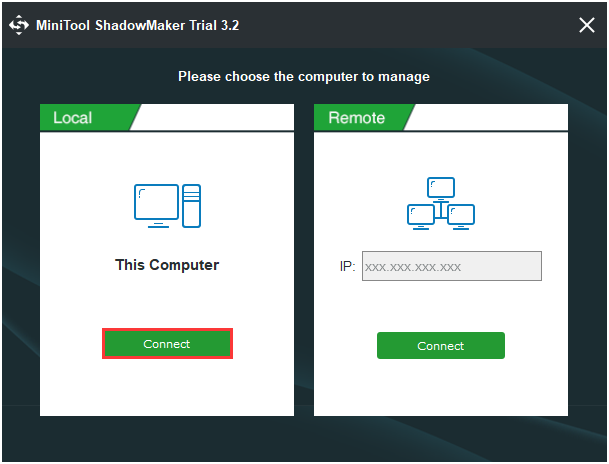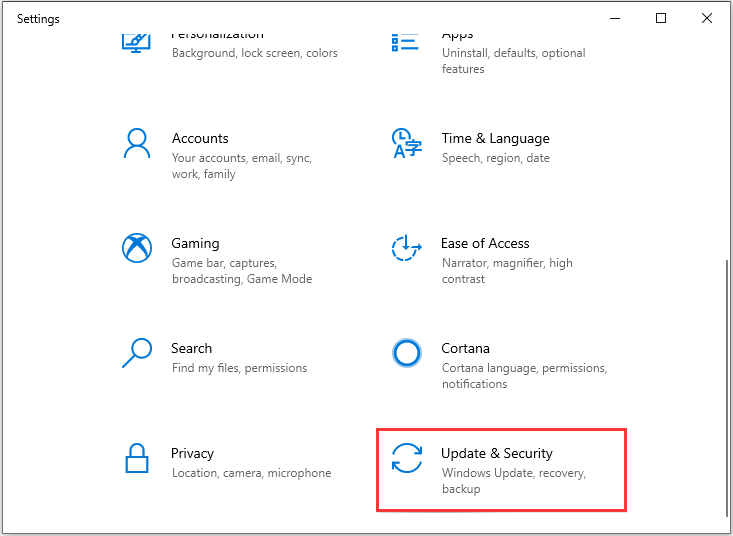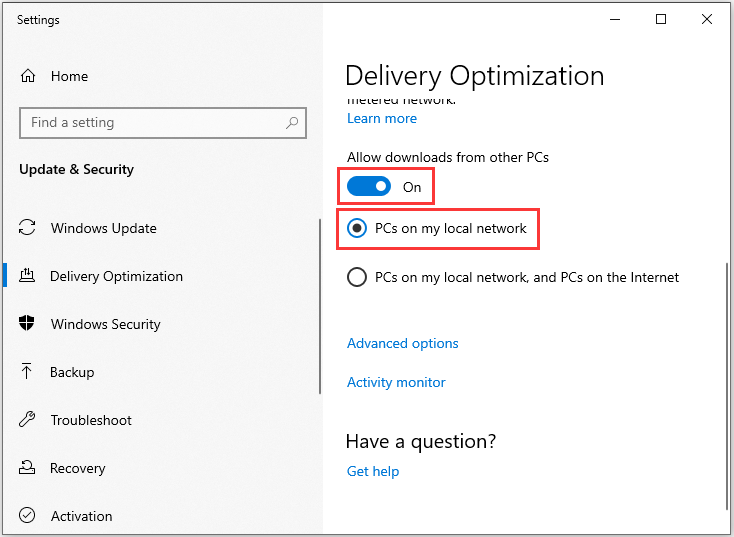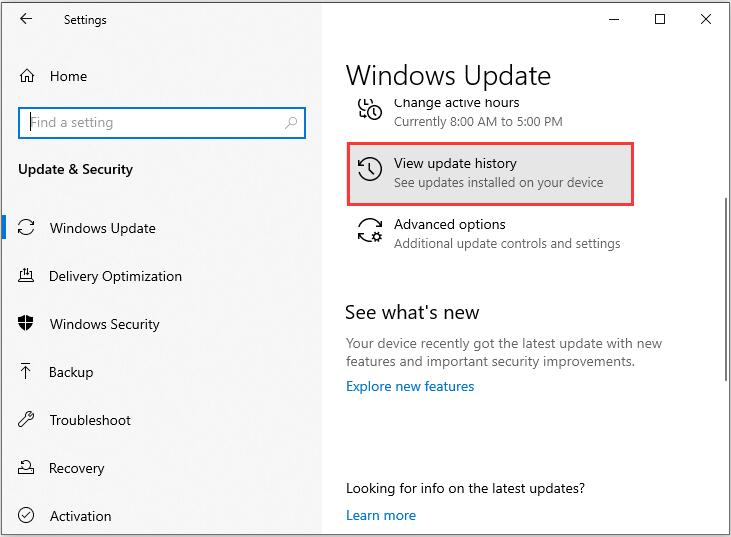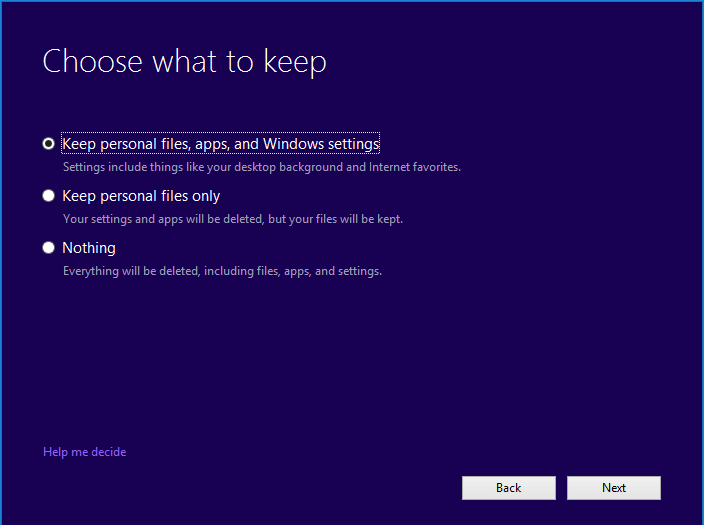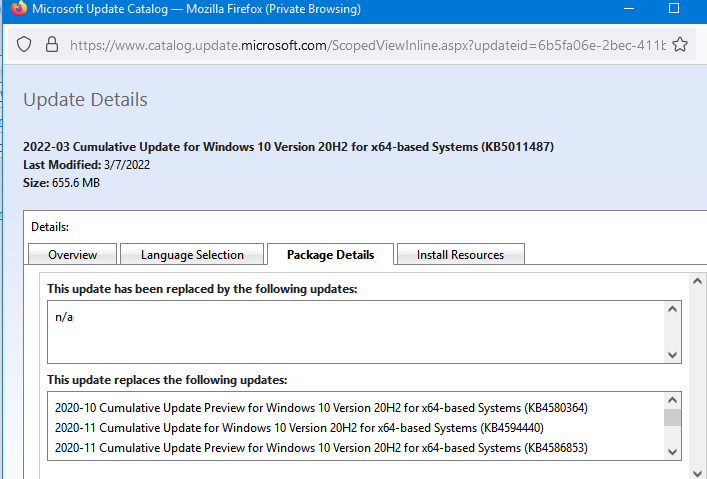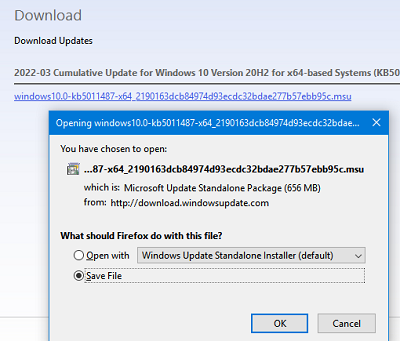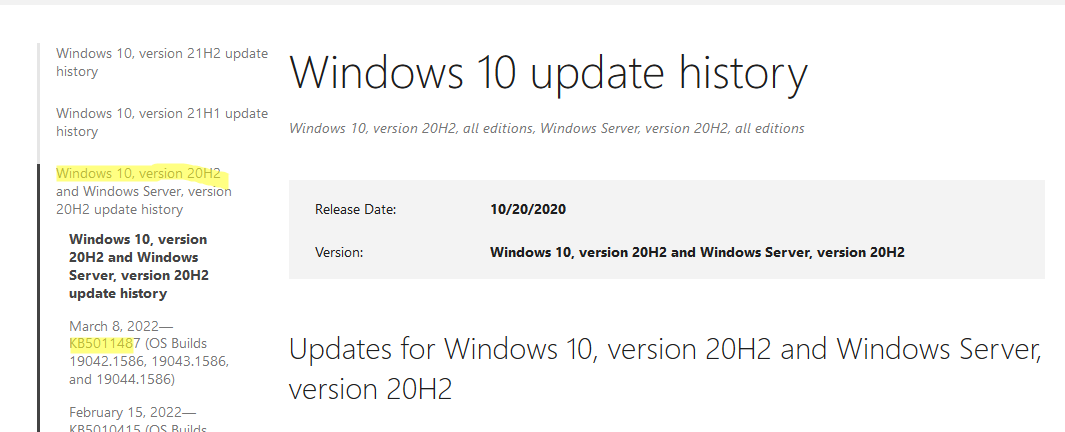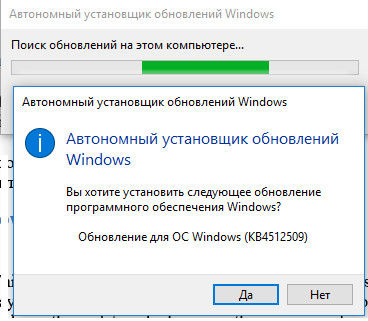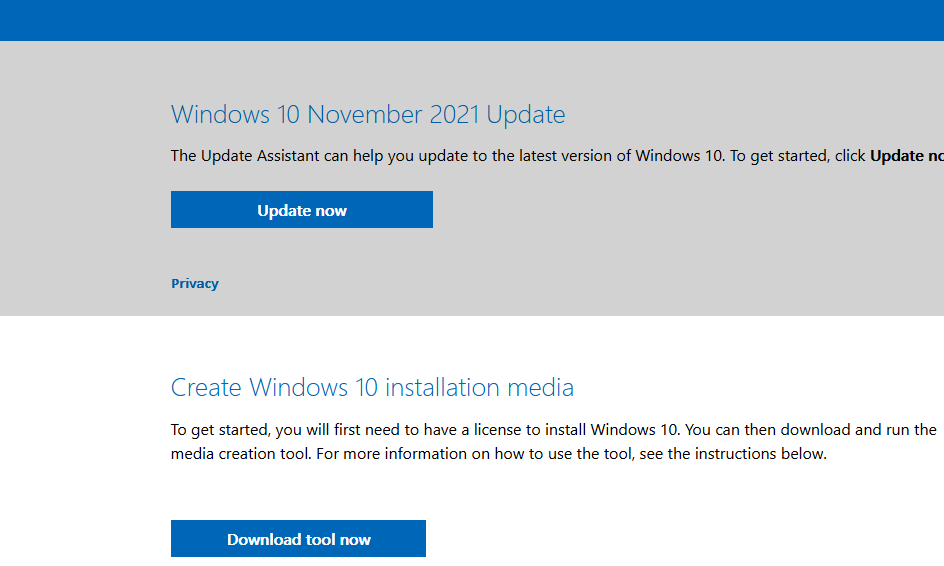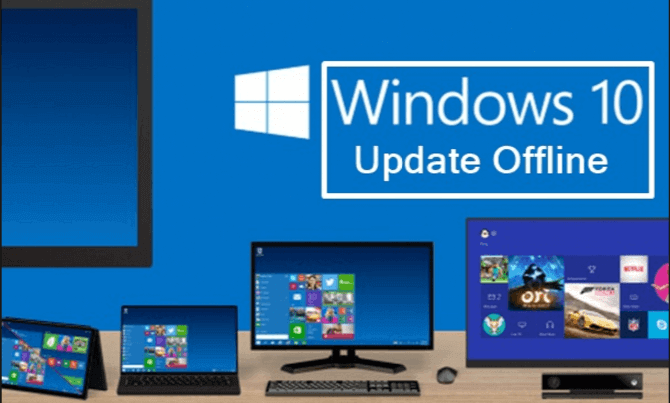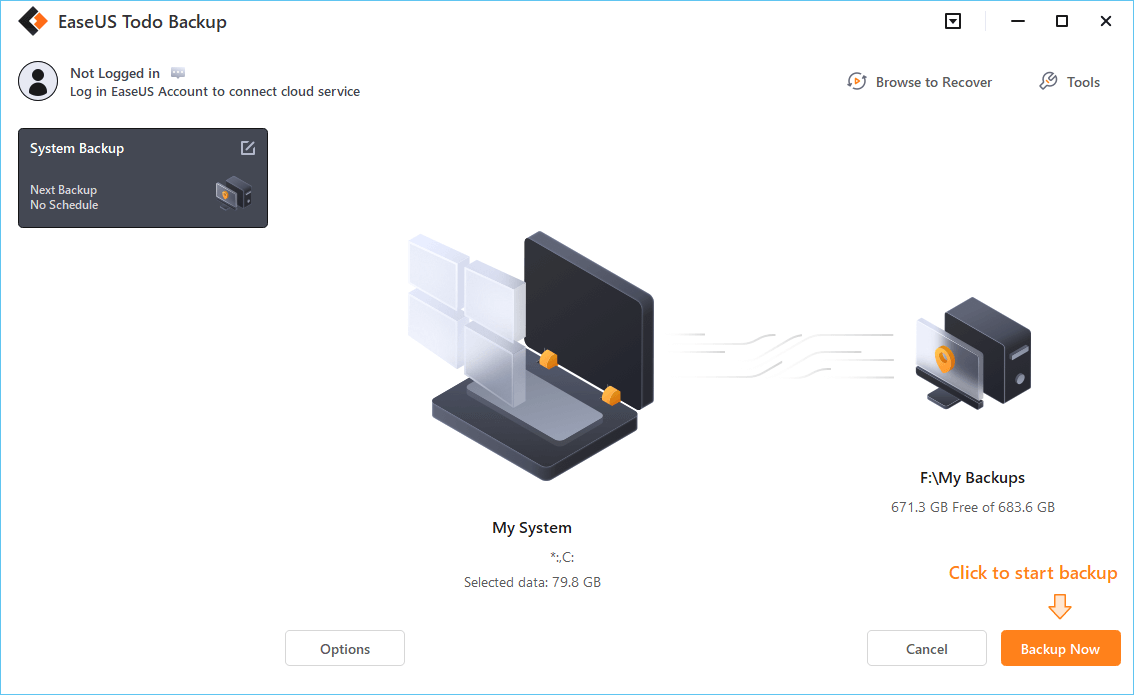Кто пользовался и до сих пор пользуется мобильным интернетом 2G, тот хорошо знает, насколько медленным может быть скачивание даже небольших по объёму файлов. И даже если у вас есть 3G-интернет, скорость передачи данных может оставаться весьма низкой, когда вы находитесь далеко от источника сигнала. Спрашивается, как в таких условиях обновлять Windows, если Центр обновления едва тянет?
Или вот, например, такая ситуация.
Вы хотите обновить Windows 10 на рабочем офисном компьютере, но последний, будучи подключённым только к локальной сети, не имеет доступа в интернет. Выходом в таких случаях может стать обновление в автономном режиме, благо такую возможность в Microsoft предусмотрели. Всё, что вам для этого нужно, это компьютер со стабильным и быстрым интернетом и флешка или любое другое переносное устройство.
Возможность скачивания и установки накопительных обновлений в автономном режиме доступна с 2016 года.
Всё очень просто. Вы заходите на специальный сайт и смотрите, какое обновление сейчас самое последнее, после чего сравниваете номер билда на сайте с номером установленной у вас версии Windows 10. Если для вашего ПК доступно новое обновление, скачиваете его с каталога кумулятивных обновлений и устанавливаете как обычную программу.
А теперь всё более подробно.
Сначала проверяем текущую версию Windows 10 на компьютере, для чего открываем приложение «Параметры», заходим в раздел Система -> О программе (в сборке 1703 «О системе») и записываем номер текущей версии.
Затем переходим по ссылке support.microsoft.com/en-us/help/4018124, смотрим номер актуальной на данный момент версии и сравниваем с тем, что имеем на локальном компьютере.
На 18 декабря самой актуальной является версия под индексом 16299.125, а у вас, к примеру, установлена версия 15254.125. Значит, отстаём от жизни. Нехорошо, это надо исправить. Записываем идентификатор последнего накопительного обновления (он всегда начинается с KB), садимся за подключённый к нормальному интернету компьютер, открываем каталог обновлений по адресу www.catalog.update.microsoft.com, вбиваем записанный ID в поисковое поле и жмём «Найти».
На следующей странице выбираем в списке соответствующий вашей разрядности и архитектуре процессора кумулятивный апдейт и скачиваем его на флешку.
Далее переносим установочный файл MSU на компьютер с обновляемой системой и запускаем его как обычную программу. После непродолжительной проверки мастером-установщиком будет запущена процедура обновления, по завершении которой вам будет предложено перезагрузить компьютер.
Это всё, после перезагрузки можете вновь зайти в раздел «О системе» и убедиться, что у вас установлен самый последний билд Windows 10.
Загрузка…
Windows keeps firing out new updates every month and sometimes you might want to install your Windows 10 updates without having to connect to the internet every time.
This is also the case when you’re installing a fresh copy of your operating system and don’t have the required drivers yet.
Whatever the case may be, we will let you know how to install Windows 10 updates offline.
Why You Need to Stay Updated at All Times
Your PC will function normally even if you don’t install any updates. However, it is always best to keep everything up to date.
This doesn’t only mean the official operating system updates from Microsoft, but also all other software updates and drivers on your system.
Microsoft, along with other software developers release updates to keep their products secure and functioning.
When it comes to your operating system, it is the key to everything on your machine which is why it is crucial to keep it secure.
Every service pack update that has come out for Windows contains tons of different security updates and fixes as well.
The biggest reason why so many security updates come out constantly is because of flaws found within the system by white-hat hackers and bug bounty hunters.
This means once someone has found a flaw in the design, everyone from the malicious side of the user-base will be taking advantage of them as well.
A simple anti-virus or malware software is not enough to keep your files protected, which is why you should download all the updates as soon as they become available.
The only reason you might not need to constantly update your machine is if you never connect to the internet, but this is very rarely the case as nearly every PC user has internet access.
In fact, in order to take full advantage of your system, you need to access the web to even activate it fully. Thankfully we have a bunch of ways to update your Windows 10 offline if you can’t connect to the internet.
Installing Updates Offline via Local Area Network (LAN)
The first method to download Windows updates offline is to grab those updates from another PC in the same network. The only thing this requires is for you to have another machine connected to the same router or network and it needs to have the updates downloaded.
These updates can then be transferred using a brand new feature introduced by Microsoft in Windows 10 operating systems.
Transferring files across a local network is a lot faster than downloading them as the speed is only limited by your routers capacity. It will also spare your internet bandwidth as you don’t need to spend hours downloading the same files twice.
Thankfully the only thing you need to do to enable this feature is to enable Delivery Optimization from the Windows settings.
The only thing you need to do is top open up your Start Menu by pressing the Windows key and typing in Settings.
Open up the Settings app and a new window should open up with a bunch of tabs. Look for the one labelled Update & Security and open it up.
Now that you’re the Updates section of the settings, you should see a Delivery Optimization tab on the left menu.
Click on it to see your delivery optimization settings for Windows. Once opened, you should see a section labelled “Allow downloads from other PCs“.
Now all you need to do is toggle the switch on and select the “PCs on my local network” option to enable local update transferring.
Now you should be able to transfer any updates to your machine as long as you have enabled this setting on your other machines as well.
In some cases, the option to allow downloads from other PCs is disabled or grayed out. This was the case for us, when we tried out this method as well.
We did some research and found a way around this limitation.
How to Fix Grayed Out or Disabled Delivery Optimization
When we were trying to enable Delivery Optimization for our copy of Windows 10 to download and install updates offline, we noticed the option to allow downloads from other PCs was disabled and turned off.
In normal situations this might happen if you are not the system administrator and shouldn’t be messing with these settings in the first place.
However, when using a personal computer while being the System Administrator, this option shouldn’t be disabled.
Note: You can also use this same method to disable downloads from other PCs if you wish.
After some research, we found out a way to turn it on. This method basically requires you to edit your Windows registry to enable the feature manually. This might sound a bit sketchy, but it’s a lot easier than it sounds. We attempted it and everything started working perfectly.
We feel obligated to say: take a backup of your registry and files before doing this, but you should be just fine if you follow these steps.
The first thing you need to do is get to your registry files. You can do this by simply typing run in your start menu and launching it.
Then in the Run window, you need to type in regedit and press OK.
You should now see a long folder hierarchy on the left side of the registry window. Navigate to this path: HKEY_LOCAL_MACHINESoftwarePoliciesMicrosoftWindowsDeliveryOptimization
Then click on the DeliveryOptimization folder to see the registry entries related to it on the right side of the window.
Next up, you should see a file labelled DODownloadMode on the right. You can double click on it to edit the value.
It has basically 3 options. You can either enter 0 for disabled, 1 for PCs on my local network or 2 for PCs on my local network, and PCs on the internet.
The latter 2 will also enable the feature, setting the selection as shown in the screenshot above.
Make sure to select the Base as Decimal then enter either 0, 1 or 2 in the Value data field. Then just press OK and you’re done.
You can always come back and reset it to 0 if it didn’t work for you.
Make sure to restart your PC afterwards to make sure all the settings have fully updated.
Update Windows Offline with the Media Creation Tool
You may have heard of the Microsoft’s official Media Creation Tool. It’s basically a software to format an external drive into a Windows installation format.
It can be used to create a bootable Windows installation from your current operating system. The great thing about it is, if you have installed any service packs or updates, they will be included within the installation.
The reason you need to use this tool is because it’s not possible to just drag and drop Windows update files onto a USB stick.
This is because it needs to be in a official secure format for Windows to accept it. Otherwise there would be a lot higher chance for malicious files and corrupted updates.
To get started with installing Windows 10 updates offline with the Media Creation Tool, you need a few things first. Follow the steps below and you will be set to go.
Setting Up the Media Creation Tool
The obvious first step is to download the tool. You can find the official download page for the tool on the Microsoft website. Follow the link to the website and click on the “Download tool now” button to start the download.
You also need an empty USB flash drive with at least 8 GB of storage space. This is the minimum capacity requirement for the installation files. The drive has to be empty because the tool will overwrite everything on the drive to format it properly. This means if you have files on the drive, they will be deleted.
Now that you have your removable USB storage plugged in, start up the Media Creation Tool. You will have to go through a few prompts like accepting the terms and selecting which format you would like the installation to be in (Language, Windows edition and architecture).
Those settings will default to your current specs, but you can change them as you’d like.
Finally you should see a list of removable drives that can be used for the process.
Once you have found one to use, click on Next to start the installation.
It can take quite a while as the whole USB drive needs to be formatted and a lot of files will be installed on it. Once this has been completed, you can move on to the next step, installing the updates on your target machine.
Installing the Updated Windows to Target System
You should now have a flash drive with an official Windows installation on it. The next step is to plug that drive into the machine you wish to update.
Navigate to your “This PC” in your file explorer to see your connected devices. Look for the USB drive and run the “Setup.exe” within the drive.
You will be greeted with the same media creation window you previously installed the files with. Next you need to select whether you wish to keep all your apps and settings on the current system in tact or if you wish to do a clean install.
In our case we want to select the first option “Keep personal files and apps“, as we wish to only update the operating system. This way no files, apps or settings will be affected by this update process.
Finally, all you need to do is click “Next” and then “Install” in the following screen. Note that you will need approximately 10 GB of free space on your machine to run the installer. If you don’t have enough free space, you will see a screen asking to clear up some space.
If you can’t clear up any useless data, you can insert a secondary USB drive with enough storage to use as a temporary storage device. This way the installer will use that device to store all the temporary files needed for the installer to finish the setup.
The secondary storage device will not be wiped, so you don’t need to worry about any existing files on it.
Now you should be done and your system will have all the same updates you had on your original operating system, all without an internet connection.
Find Updates via Windows Update Catalog
This final method requires you to find specific updates, download them, and finally install them on any device of your choosing at a later date.
Microsoft stores all their existing update files and installers in the cloud. They have made a nifty list of all of them for you to download. The only issue is that you need to know the name or part of the name of each update you wish to download.
You can access the official update catalog on the Microsoft Update website. You can use the search bar at the top of the page to look for the updates you wish to download.
Once you find an update you need, just click on the download button on the right side. This will open up a new window with a link to the specific file. Clicking on that filename will initiate the download.
Most of the updates will be downloadable in an executable (.exe) format which can be ran directly to install them.
However, some files can only be downloaded as cabinet files (.cab) which are a bit more complicated to install. If you wish to install an update through a cabinet file, you can follow the simple instructions below.
How to Install a Windows Update Cabinet File (.cab)
In order to install a Windows update from a cabinet file, you need to use the Command Prompt. We made an extensive guide on how to use the Windows Command Prompt, if you wish to learn more about all the things you can do with it.
Note: This only works for Windows Update KB installers, not driver installers. If you need to install a cabinet formatted driver, you need to extract the files from the .cab file using an extraction tool like 7-zip, then run the setup.exe found within those files.
First you need to launch the Command Prompt as an administrator. If you don’t know how to do that, check the guide linked above, as it contains an easy newbie friendly way to do so.
Now that you have the cmd opened as admin, you can use the DISM command to install cabinet files. All you need to know is the path to the folder where you downloaded the installation file.
In our case, we moved the file to the following path: C:UsersTechTipVaultDownloadswindows_update_file.cab
Now that you know the path, use the following format to run the DISM command in the command prompt:
DISM /Online /Add-Package /PackagePath:"C:UsersTechTipVaultDownloadswindows_update_file.cab"
Although the command has /Online as a parameter, this does not mean you need to be connected to the internet. The parameter just means that this package will be installed to the currently running operating system.
Now you have successfully installed a Windows update or hotfix in a .cab format.
We’ve outlined all the best ways to install Windows updates offline and we hope you found a method that works for you. When it comes to updating an operating system, you should always take a backup of your files as you never now if something goes wrong.
Windows updates are notorious for blue screens and other issues, so it’s better to be safe than sorry. We also recommend checking out how to speed up your Windows 10 to make the updates work faster and smoother in the long run.
Check out our two recommended methods to do this
by Radu Tyrsina
Radu Tyrsina has been a Windows fan ever since he got his first PC, a Pentium III (a monster at that time). For most of the kids of… read more
Updated on October 13, 2022
Reviewed by
Vlad Turiceanu
Passionate about technology, Windows, and everything that has a power button, he spent most of his time developing new skills and learning more about the tech world. Coming… read more
- Windows updates automatically if you have set the Windows update accordingly but the process will take a long time.
- Compared to the online update, the offline update has many advantages such as shorter update times and more secure updates.
- You can perform a Windows 10 offline update if your internet connection is poor or you simply prefer not to use the internet.
XINSTALL BY CLICKING THE DOWNLOAD FILE
This software will repair common computer errors, protect you from file loss, malware, hardware failure and optimize your PC for maximum performance. Fix PC issues and remove viruses now in 3 easy steps:
- Download Restoro PC Repair Tool that comes with Patented Technologies (patent available here).
- Click Start Scan to find Windows issues that could be causing PC problems.
- Click Repair All to fix issues affecting your computer’s security and performance
- Restoro has been downloaded by 0 readers this month.
If you have no Internet connection or a bad network, but you need to update your Windows system, there are a couple of easy methods that you can rely on.
This article will provide solutions to help you quickly and safely install Windows 10 updates offline.
What are the advantages of updating Windows offline?
1. A more secure update
- The offline update does not require a network. This means the installation is more secure and stable.
- No viruses or unknown files are loaded and installed on the PC and nothing breaks or freezes if the network connection suddenly breaks down.
- Some important system drivers are also renewed during the offline update so that errors occur less frequently.
2. Shorter update time
- The offline update does not take as long as the online update.
- Users also do not need to wait for the Internet download and system configuration analysis.
3. Update at any place
- Once you have downloaded the offline update, you can install it anywhere you want, even if you don’t have access to the Internet.
4. System Backup before Windows 10 offline update
- To avoid system errors and unexpected data loss when updating Windows 10 offline, it’s best to first make a full backup for the system and important data.
- Check out our 5 best local data backup software that can easily and quickly back up the system, important data, and even the partitions/hard drives.
How can I update Windows 10 offline?
1. Use updates or patches to update Windows 10 offline manually
1. Download the Windows 10 .msu/.exe update files. All installation files can be found on the official Microsoft download page.
2. Select the desired Windows 10 Update version, and double-click on it.
3. The system will check if the update has been installed before or not. If it’s available on your PC, the installation will begin. All you need to do is follow the on-screen instructions.
4. After the installation, restart your PC.
5. After the installation, restart your PC.
A great method you can use to update Windows 10 offline is to make use of Windows 10 .msu/exe update files, available for download on the Microsoft website.
This will ensure that you can install the OS without requiring an internet connection, in a very short period of time.
- How to Update Bios on Windows 10 PCs
- How to Create a Windows 10 UEFI Bootable USB Drive from ISO
- Install Windows 10 using UEFI [EASY STEPS]
- How to install Windows 10 on a second drive [QUICK GUIDE]
2. Install Windows 10 offline update with the Portable Update
- This method requires the user to install a freeware called Portable Update.
- The advantage is that you can install the same update files on multiple PCs or on one PC multiple times.
- The program will use the standard Windows Update API Service for updating.
- If you don’t like the updated Windows 10, you can roll back to your previous Windows system.
Sometimes the online update will take a long time, but compared to the online update, the offline update has many advantages.
In this article, Windows users found detailed instructions for an easy and safe Windows 10 offline update.
If you have any additional suggestions or questions, be sure to leave them in the comments section below.
Newsletter
The Windows 10 Update Assistant downloads and installs feature updates on your device. Feature updates like Windows 10, version 1909 (a.k.a. the Windows 10 November 2019 Update) offer new functionality and help keep your systems secure. You’ll get these updates automatically after you download the Update Assistant.
If you don’t want to wait for an automatic update, or if you want to check for quality updates (which are more frequent and include small fixes and security updates), you can update Windows 10 yourself.
If you’re an IT professional, you can defer updates. Go to Windows 10 servicing options.
Need to know which version of Windows 10 is running on your device? You can check quickly and easily. In the search box on the taskbar, type winver, then select winver from the list of results.
Need to know about required disk space, error codes, removing an installed update, or other update questions? Find more help at Windows Update: FAQ.
Note: Windows 10 Update Assistant doesn’t run on ARM-based PCs. It’s only supported for PCs using x86/64 processors.
Need more help?
It’s annoying for you to download Windows 10 with limited Internet-based bandwidth. Sometimes, it does take a long time for Windows 10 online updates. Thus, we recommend you to download Windows 10 offline update. This post from MiniTool can help you do that.
Windows 10 Offline Update
Windows is a widely used operating system all over the world. In most cases, even if you don’t install any updates, you can still use your PC normally. However, that doesn’t really mean you don’t need to update it. It is recommended to install the updates since there are lots of patches that can protect your system, files, and data from potential threats.
However, not everyone’s Internet has stable connectivity, and many people say that they fail to update their Windows 10 online. In addition, if you want to download the updates manually and save it to your computer, you had better download Windows 10 update offline.
Here are some advantages of the offline Windows 10 update below.
1. Fasting installing speed and shorter update time
With the Windows 10 installation package you downloaded earlier, you can install and update Windows 10 on your PC faster by updating Windows 10 offline. Additionally, the Windows 10 offline update can save your time since you don’t need to wait for the Internet downloading and analyzing your system configurations.
2. Safer update circumstance and lower risks for getting update error
Windows 10 offline update requires the entire system and drivers to be installed from a complete update patch and it doesn’t need to access the Internet. Thus, you will have a safer update circumstance and have lower risks for getting update error.
Back up Your System
Before you start to download Windows 10 updates offline, it’s recommended to back up your system to restore your system when it crashes since sometimes Windows updates will cause the “your PC can’t boot normally” issue. Here is a piece of fantastic and professional backup software – MiniTool ShadowMaker for you.
The system backup is bootable. When the system crashes, you can restore your computer to a normal state, you may be interested in this post — How to Restore Computer to Earlier Date in Windows 10/8/7 (2 Ways). You can also use it to back up the disk and partitions, files and folders. In addition, it also supports syncing files to avoid losing data as much as possible.
Now, get MiniTool ShadowMaker Trial immediately to back up your system.
Free Download
Let’s proceed to see how to back up the system with it.
Step 1: Launch MiniTool ShadowMaker and click Keep Trial. Then click Connect in This Computer to enter its main interface.
Step 2: After entering its main interface, go to the Backup page. MiniTool ShadowMaker is designed to back up the operating system, so it chooses the OS as the backup source by default. Thus, you don’t need to choose.
Step 3: Click the Destination module to choose the backup destination. Here are four available paths including Administrator, Libraries, Hard drives and the Shared folder. It is recommended to choose the external hard drive as the backup source.
Step 4: After selecting the backup source and destination, you can perform the backup task immediately. Click Back up Now to continue.
When the backup process is finished, the system image is successfully created. When you encounter the “system crashes” issue, you can use the system image to restore your computer to a normal state directly.
Here is a piece of powerful backup software- MiniTool ShadowMaker to back up my system. After following the instructions from this post, I successfully make a backup.Click to Tweet
After you back up the system, you can go to the next part – how to update Windows 10 offline.
How to Download Windows 10 Updates Offline
- Download the update in advance
- Download the update locally
- Offline update Windows 10 with updates and patches
- WSUS offline update
- Use the media creation tool
How to Download Windows 10 Updates Offline
Method 1: Download Updates in Advance
Downloading the updates and installing them are two different things. If you want to install an offline Windows update, you should download the update in advance. Here is how to do that:
Step 1: You need to go to the Updates & Security section in the Settings application.
Step 2: Check to see if there are some updates that have been downloaded but not been installed.
Step 3: If there are, then Windows will ask you to choose Restart now or Schedule the restart to install these updates.
Step 4: You need to choose Schedule the restart to pick a time and pick a day. Then you can install Windows 10 update offline later.
Tip: If you find that Windows 10 won’t update, this post — 7 Solutions to Fix Windows 10 Won’t Update. #6 Is Fantastic is what you need.
Method 2: Download the Update Locally
Not everyone has a super-fast Internet connection and many people are on a slow network. Microsoft has a feature with Windows 10 that allows you to download updates from another computer on your LAN network which has already received the update. You can have a try now.
Tip: You should make sure that both computers are connected to the same network.
Step 1: Open the Settings application, then click the Windows & Security section. Navigate to the Delivery Optimization section.
Step 2: Go to the Allow Downloads from other PCs part, then turn it on and select PCs on my local network. If you can spare some bandwidth and want to speed up the process, you can choose PCs on my local network, and PCs on the Internet.
You need to check for the update manually once since you are using a local network. If Windows detects the Windows 10 offline update on the local network computer, it will begin downloading it.
Method 3: Offline Update Windows 10 with Updates and Patches
You can also try this method to update Windows 10 offline with updates and patches. In other words, that is to download the Windows 10 offline update manually. It makes the installation process straightforward without any extra operations. Follow the instructions below step by step:
Step 1: Open the Settings application again and go to the Update & Security section. Then click View update history.
Step 2: Copy the recent KB number of the Windows Update package.
Step 3: Go to the Microsoft Update Catalog website. Paste the KB number of the Windows Update package in the Search box and press Enter.
Step 4: Click the Download button and a popup window will appear. In the popup window, click the .msu file link to download it. Then you can use these files to install Windows update offline.
Note: If you need to install multiple .msu files, you had better install them one by one but don’t restart the computer until the last one is installed.
Also see: April 2019 Patch Updates Cause Windows to Freeze or Slow Down
Method 4: WSUS Offline Update
Using WSUS Offline Updater to download and install Windows 10 update offline is also a nice idea. WSUS Offline Updater is a small open-source software tool for Windows to download updates automatically from the Microsoft server.
Step 1: Download WSUS Offline Updater and you should make sure the version you download is the most recent version of the tool.
Step 2: Extract the zipped file and double-click UpdateGenerator to open it.
Step 3: Next, select the updates you want to download and configure the Options.
Step 4: Then, you can add the URL of your WSUS server. Click Start to initiate the download and WSUS Offline Update will start downloading the updates.
Step 5: Now, you can install updates on a computer that is not connected to the internet. You can share the WSUSOffline folder and access it via a network share.
Step 6: Open the WSUSOffline folder to access the update folder.
Step 7: There are two folders: client and iso. You should click the client folder and double-click UpdateInstaller.
Step 8: Then select available updates and click Start.
Tip: To find more intuitive operation steps of WSUS Offline Update, you can search online.
When the update process finishes, the updater will return a report.
Method 5: Use the Media Creation Tool
Here is the last method. Microsoft has a Media Creation Tool that can help you create bootable USB flash drives or burn the file to a DVD. Media Creation Tool makes it much easier to update Windows 10 to the latest version. Please do the update by following these steps:
Step 1: Download the Media Creation Tool from Microsoft. Run the MediaCreationTool.exe file.
Step 2: Choose Create installation media for another PC and click Next.
Step 3: You should select your language, Windows edition, and architecture manually. Then click Next.
Step 4: Then you can choose the media to use. Here are two choices for you: USB flash drive or ISO file. If you choose the USB flash drive, you should make sure that it has at least 8 GB storage space. Then you can click Next.
Step 5: Then select a USB flash drive and click Next. Then you can see the progress screen where the tool will begin the downloading process. It may take some time depending on the size of the update. When it is done, click the Finish button.
Step 6: Now, You have the updates on the USB drive. You can upgrade whenever you want. To do this, you just need to connect the USB drive again and double-click the Setup.exe file to perform the process.
Step 7: You had better select the Keep personal files, apps, and Windows settings option during the setup process since it won’t make you lose data from your hard drive or SSD.
Step 8: Click the Install button on the next screen and wait for the updates to be installed.
Windows may take time to apply the updates, and your PC will restart several times, so don’t worry. Then, you have successfully installed the Windows 10 offline update.
Here is all the information on Windows 10 offline update. If you think this post is helpful to you, please share it on Twitter to let more people know.Click to Tweet
Bottom Lines
This post has offered you some useful and feasible methods to download Windows 10 updates offline. At the same time, it is recommended to back up your system with the professional backup software – MiniTool ShadowMaker to better safeguard your computer.
If you have any confusion about the methods or have any suggestions of MiniTool ShadoMaker, leave a comment below or send an email to [email protected].
Windows 10 Offline Update FAQ
?How long should Windows update take?
?Does preparing to install updates need the Internet?
You don’t need to have an active Internet Connection. When you receive the «Preparing to install» prompt, it means that your updates have already been downloaded and the system will be installed.
?What to do when Windows update gets stuck or is frozen?
?How to roll back a Windows update?
- Press the Windows+I keys to open the Settings application.
- Choose Update and Security. Then click View update history.
- Click the Uninstall updates Right-click the update you want to uninstall.
- Click the Uninstall button.
Windows updates giving you the business? Does your computer restart at inopportune moments when you are working? Do you find yourself spending hours deploying patches when you install Windows either for yourself or somebody else?
Or worse yet, is your Internet unreliable, and your PC suffers from unsuccessful update attempts?
To fix various Windows 10 problems, we recommend Outbyte PC Repair:
This software will repair common computer errors, protect you from file loss, malware damage, hardware failure, and optimise your computer for peak performance. In three simple steps, you can resolve PC issues and remove virus damage:
- Download Outbyte PC Repair Software
- Click Start Scan to detect Windows 10 issues that may be causing PC issues.
- Click Repair All to fix issues with your computer’s security and performance.
This month, Outbyte has been downloaded by 26,078 readers.
The horror!
If you are wondering that whether it is possible to deploy updates on your Windows 10 computer offline, then you are in luck. Microsoft allows you to easily keep your Windows and Office installations fresh, even if they are on PCs that have no Internet connection. Third-party apps are in the game, too.
We will learn all there is to know about what you need to do to download and install Windows updates in offline mode, at your convenience.
So, buckle your seatbelts, and prepare to go offline!
The Thing about Windows updates
Everyone can agree that keeping on top of updates is necessary to ensure that your devices are protected from the latest threats lurking in the wild. Microsoft proactively releases patches, fixes, and performance improvements every month for all supported versions of its OS.
For the most part, your computer will function fine even if you don’t install any updates.
But that does not mean you should not update it. Doing so is leaving your computer vulnerable against terrifying malware, and your files and data exposed to petrifying threats. That is because researchers and hackers, both, are always looking for new bugs and security gaps in Windows that they can exploit.
Microsoft not only releases updates to fix these issues, but also resolve multiple problems that may be hampering the performance of your PC, and preventing some applications or features to correctly function.
It is for this reason that Microsoft wants you to install these updates in Windows 10, whether you want them or not — particularly on Windows Home. You are provided with a choice of delaying them, for days or months on end, depending on your variant of the operating system.
But install these updates you must, one way or another.
The Update affair
That said, the company is fully aware of how burdensome this process of updating PCs can be. Plus, there are factors beyond control, like the stability and reliably of the Internet connections. To combat that, it has put together a number of features and services to streamline the activity.
For starters, Windows 10 does a good job of letting you customize how and when you want to install these updates on your devices. Pretty much every new version of Windows 10 has brought along refinements to the way you update your computers.
And then there the various services that Microsoft has made available.
These include the company’s own enterprise solution, Systems Center Configuration Manager (SCCM) and Windows Server Update Services (WSUS), which are the component that download patches centrally and deploys them across your network.
These often come with expensive licensing fees and hardware requirements — not for the average Joe.
What end users have access to are options just as good.
Why download Windows updates offline?
There are a number of reasons why you might want to update your Windows installation in an isolated environment by manually downloading the updates. There may be times when you might not have access to the Internet, or your connection might be slower than a snail. Or the computer you want to update may not have access to the web, or the proxy server.
Some users may find it necessary to completely update a freshly formatted computer before having it connect to a network. And believe it or not, some computers don’t even have a hardware network connection at all, or their wireless cards or ports are out of order and not working. And finally, there may be cases where you want to have complete control over the update process.
In cases like these, you might want to update Windows offline manually.
There are a number of different ways you can go about it, directly or by using a few good applications.
We’ll list all of them below.
Before we enlist the help of programs, let’s see what native options we have on Windows for installing the latest updates manually. These will come in useful, depending on your update woes, and whether you are seeking more speed or control over when and how the patches are deployed.
Download in Advance
Downloading an update is one thing, and installing it is totally another. Knowing the difference between these two events is necessary to make the call. Essentially, you can download all the updates for Windows 10 in advance, and then install them offline whenever you want.
To do this, go to Updates & Security in the Settings app, and see if updates are already downloaded but not installed. If this is the case, then Windows will ask you to either restart or a schedule the restart to install these updates.
You can also check for and download the updates, and then schedule them at a good time so that you don’t end up wasting your work hours watching your PC install these patches.
Scheduling the installation of these updates at a later time is easy. Simply click on Schedule the restart link to pick a time. It has to be on the same day.
Download updates Locally
Not everyone has a superfast Internet connection. If you are on a slow network, then this new feature that Microsoft introduced with Windows 10 is a lifesaver. It allows you to download updates from other computers that are connected to your LAN that have already received the updates.
The idea being, why download these files again, when you can simply transfer them to your PC?
Why didn’t anyone think of this before?
You will have to make sure that both the computers are connected to the same network. And then in the Settings app, look for the Delivery Optimization panel under Update & Security.
Simply toggle on the switch that says Allow downloads from other PCs, and select the local network choice to find and deploy updates on your computer. Because you are on a LAN, you will just need to check for updates manually once. And if Windows detects them on your network, it will instantly begin transferring them.
If you have bandwidth to spare, however, you can further speed up the process by telling your computer to download updates both from your local network and the Internet.
Download via the Windows Update Catalog
Not many people know this, but Microsoft maintains a handy catalog of all the updates that it has released for a particular operating system. And it lists them in one old school looking website that goes by the convenient name of Windows Update Catalog.
You can directly download an update from this portal (as an .exe file) and install it on your computer.
All you need to do is visit the catalog homepage and either search for your OS version or the name of the update itself if you know it. You will get all the details on the results provided, including classification, version, and size.
Downloading it is simply a matter of clicking the Download button and saving the file locally on your system. Then all you need to do is double-click the downloaded file and it will auto install. You can even move this file to other computers you own or manage.
Could not be simpler, the process.
Use the Media Creation Tool
A left field choice, but very much an option for those who are installing a new copy of Windows on different computers. Microsoft has a nifty little Media Creation Tool up for grabs that helps you create bootable USB flash drives or burn the installation media on a DVD.
You are basically getting ready the latest version of Windows 10 if you go this route, meaning this is more suitable for updating your offline devices with the newest version of the operating system.
The tool automatically downloads the latest bits for that given version, as it prepares your USB or ISO file that you can either burn or extract and take a look at directly. This means that preparing your media will take some time, but it will be worth the wait.
Just take care to select the Keep personal files and apps option during the set up to only install the updates. This is important if you don’t want to lose data from your hard drive or SSD.
You can, obviously, use this method to install a fresh copy of Windows 10 or upgrade to the latest version of the operating system. But if you just want to install updates, perhaps on multiple computers that are not connected to a network, this may be worth a look.
Update Windows Manually via Software
These built-in, native options are fine and dandy. But enterprising developers have also created their own solutions for users that want more control over Windows updates. These tools let you download the patch files on your system, and deploy them whenever and however you want.
Worth a mention that while many of these programs have been around for ages, not all of them are being updated. Programs like AutoPatcher and Windows Update Downloader have reached the end of the road. And though you can run them fine to take a look around, they will only download updates released a year or two back — basically back when their developers last updated these tools.
For this reason, you need to download tools that are regularly refreshed.
We list two of the best ones below.
WSUS Offline Update
A fine, fine piece of software that lets you update any computer running Windows or Office, without the need of an Internet connection to download and install the patches. WSUS Offline Update may come with a slightly intimidating user interface, but take a look around and you will be comfortable in no time.
All you need to do is install this freeware program and run it on a PC that can get online.
Then, all you need to do is tell the application what exactly you would like to download. It serves up all manners of options, from patches for Windows 8 and 10, as well as Windows Server 2012, alongside Office 2013 and Office 2016.
Legacy Windows and Office versions are conveniently listed in separate tabs.
Once you make your choices, it is simply a matter of selecting your options down below, like verifying the downloaded updates, including C++ Runtime Libraries and .NET Frameworks, and include Service Packs or not. You can optionally copy the downloaded updates to a USB stick or even create an ISO image, suitable for burning to a CD or DVD.
When ready, simply press the Start button at the bottom, and the program will begin downloading the update files on your system.
The developer brings out a new version of WSUS Offline Update every month, which includes the latest updates that Microsoft has released up until then. Better yet, if you have run the program before the newest version, then the update you had previously downloaded will not need to be downloaded again.
Portable Update
True to its name, Portable Update is a portable application that gets you up and running without the need to install anything. It does require you to be connected to the Internet during the setup phase, which is a bit lengthy as it needs to install certain files before it can work its magic.
Files like Offline Scan Cab File and Windows Update Agent.
Once done though, the program serves up a multi-tabbed interface that lets you perform various tasks like selecting the items needed for download, checking the update history, and using the search function.
Clicking on an item gives you more details to look at.
But the real action happens in the Download tab, which comes with a handy status bar, and allows you to download all updates for Windows 10, even the ones that you have already installed. This comes in handy if you want to grab an older patch, in case a newer one is causing issues.
All patches are saved in the Cache folder, and you can put them to good use from there. Once the update is downloaded and stored on location, the program will use standard Windows Update API services to update your computer. An added advantage of this is that you will see the log update in the standard update history log — exactly as if it was done from Windows Update.
Portable Update works with Windows XP, Vista, 7, 8.1, and Windows 10, while different versions of Windows Server are also supported.
Conclusion
Understandably, many of you are averse towards updating Windows in the fear that updates may break something or restart your computer at the wrong time. If you follow the guide above, and download updates offline, then those days could well be behind you.
Installing updates manually takes a minute to set up via third-party apps. But once you do, you will have full control over what gets deployed and when.
Shawn is a WindowsChimp Staff writer, who is a fan of making lists and does the same on this site. He has a Contemporary Writing degree and been in technology niche since last 3 years.
Microsoft выпускает новые обновления безопасности для своих продуктов как минимум один раз в месяц. В большинстве случаев служба Windows Update прекрасно справляется с автоматическим получением и установкой обновлений Windows. Также вы можете вручную найти, скачать и установить актуальное кумулятивное обновление безопасности для вашей редакции и версии Windows. Например, на компьютерах с отключенной службой wususerv, в изолированных от интернета сетях (если у вас не используется WSUS сервер, где можно вручную управлять тестированием и одобрением обновлений Windows), в локальной сети с лимитным подключением (metered connection) и т.д.
Содержание:
- Узнать дату установки последних обновлений Windows
- Как найти и скачать последние обновления безопасности для вашей версии Windows?
- Ручная установка кумулятивных обновлений в Windows
- Ручное обновление билда Windows 10 (Feature Update)
Каждый второй вторник месяца Microsoft выпускает новые обновления для всех поддерживаемых редакций Windows (исправления для особо критичных уязвимостей могут выпускаться быстрее, не дожидаясь этой даты. Также имейте в виду, что в Windows используется кумулятивная модель обновлений. Это означает, что для обновления Windows достаточно установить только один, последний, кумулятивный пакет безопасности.
Узнать дату установки последних обновлений Windows
Проверьте дату установки последних обновлений на вашем компьютере с помощью PowerShell команды:
gwmi win32_quickfixengineering |sort installedon -desc
Source Description HotFixID InstalledBy InstalledOn PCname1 Security Update KB5011352 NT AUTHORITYSYSTEM 2/9/2022 12:00:00 AMН
В данном случае видно, что последний раз на этом компьютере обновление безопасности устанавливалось 9 февраля 2022 года.
Так же вы можете вывести историю установки обновлений с помощью командлета
Get-WUHistory
из модуля PSWindowsUpdate:
Get-WUHistory|Where-Object {$_.Title -match "KB*"} |Sort-Object date -desc
Затем вам нужно узнать версию и номер билда вашей Windows. Воспользуйтесь командой:
Get-ComputerInfo | select WindowsProductName, WindowsVersion, OsHardwareAbstractionLayer, OsArchitecture
WindowsProductName WindowsVersion OsHardwareAbstractionLayer, OsArchitecture Windows 10 Pro 2009 10.0.19041.1566 64-bit
В моем случае мне нужно скачать последние обновления безопасности для Windows 10 20H2 x64.
Как найти и скачать последние обновления безопасности для вашей версии Windows?
Вы можете вручную скачать последние обновления для продуктов Microsoft из каталога обновлений Microsoft Update Catalog — https://www.catalog.update.microsoft.com/Home.aspx. В каталоге вы можете найти обновления для всех поддерживаемых версий Windows (также поддерживается прямой импорт обновлений через консоль WSUS). Главная проблема, что в каталоге отсутствует удобная система поиска. Если вы не знаете номер KB, который вам нужно установить, найти и скачать пакет с обновлением довольно трудно.
Рассмотрим, как сформировать правильный запрос для поиска обновлений для вашей редакции Windows в каталоге обновлений Microsoft. Статья пишется 9 марта 2022 года, соответственно последние обновления безопасности были выпушены вчера, 8 марта (второй вторник месяца). Для поиска обновлений безопасности для Windows 10 20H2 x64 за март 2022 года, воспользуйтесь таким поисковым запросом, который нужно вставить в поисковую строку в верхнем правом углу:
windows 10 20h2 x64 3/%/2022
Каталог Microsoft Update вернул список из 3 обновлений.
Как решить какие из этих обновлений нужно скачать и установить? Конечно, можно скачать и установить вручную все эти обновления, но можно сэкономить время. Т.к. Microsoft перешла на кумулятивные обновления, вам достаточно скачать и установить последнее Cumulative Update для вашей системы.
В моем случае доступно одно большое кумулятивное обновление для Windows 10:
- 2022-03 Cumulative Update for Windows 10 Version 20H2 for x64-based Systems (KB5011487), Windows 10 version 1903 and later, Security Updates, 3/7/2022 — 655.6 MB
Щелкните по названию обновления безопасности KB5011487. В открывшемся окне с информацией об обновлении перейдите на вкладку Package Details. На этой вкладке видно какие обновления заменяет данное обновление (This update replaces the following updates:), и каким обновлением заменяется в свою очередь оно (This update has been replaced by the following updates).
Как вы это обновление ничем не заменяется: This update has been replaced by the following updates: n/a. Значит это самое последнее и актуальное кумулятивное обновление безопасности для вашей версии Windows 10.
Нажмите на кнопку Download, в открывшемся окне появится прямая ссылка на загрузку MSU файла обновлений. Скачайте файл и сохраните его на диск.
Также вы можете найти номер KB актуального кумулятивного обновления для вашей версии Windows 10 с помощью страницы https://support.microsoft.com/en-us/topic/windows-10-update-history-7dd3071a-3906-fa2c-c342-f7f86728a6e3.
В списке слева выберите вашу версию Windows 10 (в моем примере это Windows 10 20H2), затем обратите внимание на список In this release. Самая первая запись ссылается на статью базы знаний для последнего кумулятивного обновления Windows этой редакции. В нашем примере это March 8, 2022—KB5011487 (OS Builds 19042.1586, 19043.1586, and 19044.1586). Именно это обновление мы и скачали согласно методике выше.
Затем скачайте последнее доступное обновление служебного стека Windows 10 (SSU — Servicing Stack Updates). Это обновление также можно найти в Windows Update Catalog по ключевой фразе:
servicing stack windows 10 20h2
Обязательно установите Servicing Stack Update до установки накопительного обнолвения безопасности Windows.
C марта 2021 года, Microsoft перестала выпускать отдельные обновления SSU для билдов Windows 10 2004 и старше. Теперь они интегрируются в последнее кумулятивное обновление LCU (Latest Cumulative Update).
Скачать файлы обновлений Windows с помощью PowerShell
Для скачивания файлов MSU обновлений из Microsoft Update Catalog можно использовать командлет Save-KBFile из модуля KBUpdate (KB Viewer, Saver, Installer and Uninstaller) — https://github.com/potatoqualitee/kbupdate
Установите модуль из PowerShell Gallery:
Install-Module kbupdate -Scope CurrentUser
Для загрузки определенных файлов обновлений выполните команду PowerShell:
Save-KBFile -Name KB5011487, 5005260 -Architecture x64 -Path C:Updates
Ручная установка кумулятивных обновлений в Windows
После того, как вы скачали MSU файл с актуальным кумулятивным обновлением для вашей редакции Windows 10, вы можете его установить.
Щелкните дважды по скачанному msu файлу и следуйте шагам мастера автономного установщика обновлений Windwows.
После окончания установки пакета обновлений нужно перезагрузить компьютер (если после установки обновления вы наблюдаете проблемы с работой ОС или приложений, вы можете удалить его).
Также вы можете установить обновление Windows из командной строки в тихом режиме с помощью утилиты wusa.exe (Windows Update Standalone Installer). Следующая команда установит указанное обновление в тихом режиме и отложит автоматическую перезагрузку системы после завершения установки:
wusa C:updateswindows10.0-kb5011487-x64_2190163dcb84974d93ecdc32bdae277b57ebb95c.msu /quiet /norestart
Ручное обновление сигнатур Windows Defender
Если на вашем устройстве Windows включен встроенный Windows Defender Antivirus, вы можете вручную обновить его сигнатуры. Обновление с новым набором сигнатур можно скачать с Microsoft Update Catalog, либо (проще) со страницы https://www.microsoft.com/en-us/wdsi/defenderupdates#manual.
Скачайте файл офлайн установки для вашей версии Window. Например, Microsoft Defender Antivirus for Windows 10 and Windows 8.1 64-bit.
Запустите и установите файл
fpam-fe.exe
для обновления антивирусных баз.
Ручное обновление билда Windows 10 (Feature Update)
Также вы можете вручную обновить билд Windows 10 (Feature Update). Например, вы хотите вручную обновить билд Windows 10 на своем компьютере с 20H2 (окончание поддержки 10 мая 2022) на 21H2.
Для этого перейдите на страницу https://www.microsoft.com/en-us/software-download/windows10 и нажмите кнопку Update Now.
Скачайте и запустите файл Windows 10 Update Assistant (
Windows10Upgrade9252.exe)
.
Мастер предложит вам обновится до последней версии Windows 10 (Windows 10 November 2021 Update). Для такого обновления требуется подключение к интернету.
Чтобы выполнить оффлайн обновление билда Windows 10, сформируйте установочный ISO образ с новый билдом Windows 10 с помощью Media Citation Tool (позволяет создать iso образ или загрузочную флешку с Windows 10).
Затем смонтируйте ISO образ в виртуальный привод и запустите файл setup.exe. Следуйте шагам мастера обновления Windows. Подробнее это описано в статье про обновление билда Windows 10 из командной строки.
| Workable Solutions | Step-by-step Troubleshooting |
|---|---|
| Method 1. Through Updates & Patches | Download Windows 10 specific .msu / .exe update files…Full steps |
| Method 2. Through Portable Update | It requires users to use a freeware Portable Update…Full steps |
Windows 10 offline update is absolutely an ideal method for Windows users to get new systems without network or the weak Internet. Obviously, Microsoft has released quite a lot of versions of Windows 10 cumulative updates for Windows users. And it might be really annoying when they have limited bandwidth based Internet connections to install Windows 10. And sometimes, it really causes quite a long time for us to wait for Windows 10 online update.
To quickly install the latest Windows 10 on PC or laptops, here below, we’ll offer you methods for Windows 10 offline and guide you to install and update to Windows 10 offline with simple steps.
Why is Windows 10 offline update recommended?
Here below, we’ll list you some reasons and advantages for Windows 10 offline update and the list may help you to better understand whether you need to update Windows 10 online or offline:
1. Safer update circumstance
The offline update needs no access to the internet, which means that you’ll have a safer update circumstance that no virus or unknown files will be downloaded or hacked into your PC.
2. Shorter update time
It will save you much time for updating Windows system offline that you don’t need to wait for the Internet downloading and analyzing your system configurations. You can directly update to Windows 10 from the downloaded Windows 10 offline installation files.
3. Lower risks for meeting update error
Windows 10 offline update requires to install the whole system and drivers from a complete update patch, which means that you’ll have lower risks for meeting update errors during or after Windows 10 update.
4. Fasting installing speed
With the early downloaded Windows 10 installing package, it will be faster in installing and updating Windows 10 on your PC by updating the system offline.
Backup system and data before starting Windows 10 offline update
To avoid system problems or unexpected problems from happening on PC while updating Windows 10 offline, it’s always a wise decision for you to backup the system and data before making any changes to your computer or laptops.
Here we’d like to introduce a Windows backup software for helping you backup whatever you want on your PC including the system, personal files, and even some other important partitions. You may not feel like the backup software but it is still worth trying. EaseUS Todo Backup allows you to backup the Windows system and data in 3 simple steps. Free download it and backup your present system with ease now.
Step 1. On the main page, click «Select backup contents«.
Step 2. Among the four available categories, click OS.
Step 3. EaseUS Todo Backup will automatically select your system partition, you only need to select the backup destination.
Step 4. Both Local Drive and NAS are available for you to save the backup file.
Step 5. After finishing the backup process, you can check the backup status, recover, open, or delete the backup by right-clicking the backup task on the left.
After backing up the system and data, you can directly follow the below-recommended methods and tutorial steps to update Windows 10 offline now. Here below you’ll find two recommended methods and you can choose to follow either one of them to start your Windows 10 offline update job now:
Method 1. Offline update Windows 10 with updates & patches
We prefer to recommend you try this method to update Windows 10 offline with updates and patches. It makes the installing process straightforward without any extra operations:
1. Download Windows 10 specific .msu / .exe update files.
Choose the exact Windows 10 update version that you want to install and download.
2. Double click on the downloaded installing patch and install.
The system will check if the update is already installed or not.
If it’s available, it will proceed and all you need is to follow the updating procedure to let it finish the installing process.
3. After installing, do remember to restart the computer and then the offline update is complete.
Note: If you need to install multiple .msu files, do it by installing each one of them one by one but don’t restart the computer till the last one is installed.
If you need earlier download patches, please go to Microsoft Windows 10 download website and search relative update to download and perform the offline update by following about steps.
When you need to fast install Windows 10, this will be the most ideal way.
Method 2. Update Windows 10 offline with Portable Update
This method for Windows 10 offline update requires users to use a freeware Portable Update, with which, you can update Windows 10 offline without an Internet connection.
It won’t leave a trace in the Windows registry and if you come across errors, it shouldn’t be caused by this software.
However, it still requires Internet when you download the software and new Windows 10 update. The advantage of using this software is that the same file can be used to update different computers or update many times in the same PC.
And the program will use standard Windows Update API services to update your computer one the update is installed. If you wanna try this software, search it and download it to update Windows 10 offline now.
After updating Windows 10 offline, you can choose to restore the backups through EaseUS Todo Back or even revert to the previous system by restoring system when you don’t like a new Windows system. Anyway, if you are trying to update Windows 10 offline, or need a way to install Windows 10 offline, follow the above methods, you’ll make it.
Can I download Windows 10 update manually?
Yes, you can manually download the Windows 10 updates from the Microsoft website. However, we recommend that you only do this if you are comfortable with working with technical information and understand how to install updates on your computer. Otherwise, it is best to wait for the updates to be automatically installed through Windows Update.
Can your PC update without Internet?
Technically, it is impossible to update Windows without the Internet. However, you can temporarily disable your Internet connection and then enable it again after the updates are installed. This will allow you to update Windows without actually using the Internet. It is important to note that you should only do this if you are comfortable working with technical information and understand how to install updates on your computer.

